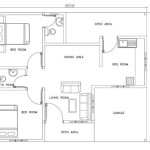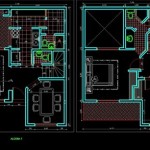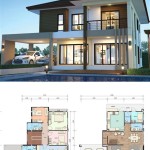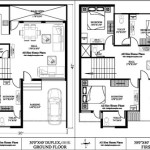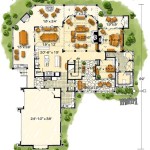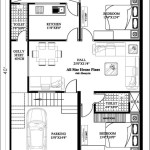Essential Aspects of an Example House Floor Plan
Creating a comprehensive floor plan is essential for designing a functional and aesthetically pleasing home. An example house floor plan can serve as a valuable guide throughout the planning process. Here are the essential aspects homeowners and designers should consider when reviewing a house floor plan:
1. Overall Layout and Flow
The overall layout of the floor plan should prioritize both functionality and flow. This involves considering the placement of rooms, hallways, and stairs in a way that allows for seamless movement throughout the home. The layout should also reflect the natural flow of daily activities and minimize wasted space.
2. Room Configuration and Size
The configuration and size of each room are crucial for both comfort and practicality. The floor plan should indicate the intended use of each room and provide sufficient space to accommodate furniture and other essential items. The size and shape of rooms should also complement their function, ensuring that there is ample space for activities and movement.
3. Kitchen Design
The kitchen is often the heart of the home, so its design should be carefully planned. The floor plan should outline the placement of appliances, cabinets, countertops, and seating areas. Consider the work triangle principle, which ensures that the refrigerator, stove, and sink are positioned for efficient workflow.
4. Bathroom Functionality
Bathrooms should be designed with functionality in mind. The floor plan should show the layout of the bathroom fixtures, including the toilet, sink, bathtub or shower, and any additional features. The size and configuration of the bathroom should accommodate the intended users and provide a comfortable and efficient space.
5. Storage and Closets
Adequate storage space is essential for maintaining an organized and clutter-free home. The floor plan should indicate the location and size of closets, pantries, and other storage solutions. Consider including built-ins or custom storage options to maximize space utilization.
6. Outdoor Spaces
Outdoor living areas, such as patios, decks, and balconies, can significantly enhance the home's functionality and aesthetic appeal. The floor plan should include the design of these outdoor spaces, indicating their location, size, and any features or amenities.
7. Accessibility and ADA Compliance
For homes designed for individuals with disabilities, accessibility should be carefully considered. The floor plan should provide clear pathways, accessible doorways, and appropriate bathroom and kitchen designs that meet ADA compliance guidelines. This ensures that all occupants can safely and comfortably access all areas of the home.
Conclusion
An example house floor plan provides a comprehensive overview of the home's design and layout. By carefully considering the essential aspects outlined above, homeowners and designers can create a floor plan that meets their specific needs and preferences. A well-planned floor plan lays the foundation for a functional, comfortable, and aesthetically pleasing living space.

Small House Design 2024001 Pinoy Eplans Floor Plans

Ready To Use Sample Floor Plan Drawings Templates Easy Blue Print Floorplan Ezblueprint Com

Floor Plans Types Symbols Examples

12 Examples Of Floor Plans With Dimensions

Home Floor Plans House Plan Drawings

Free Floorplan Template Inspirational Home Plans Sample House Floor Simple Plan Layout

Sample Floorplan Floor Plan Template

Floor Plan Wikipedia

Free Editable Open Floor Plans Edrawmax

Free Editable Open Floor Plans Edrawmax

